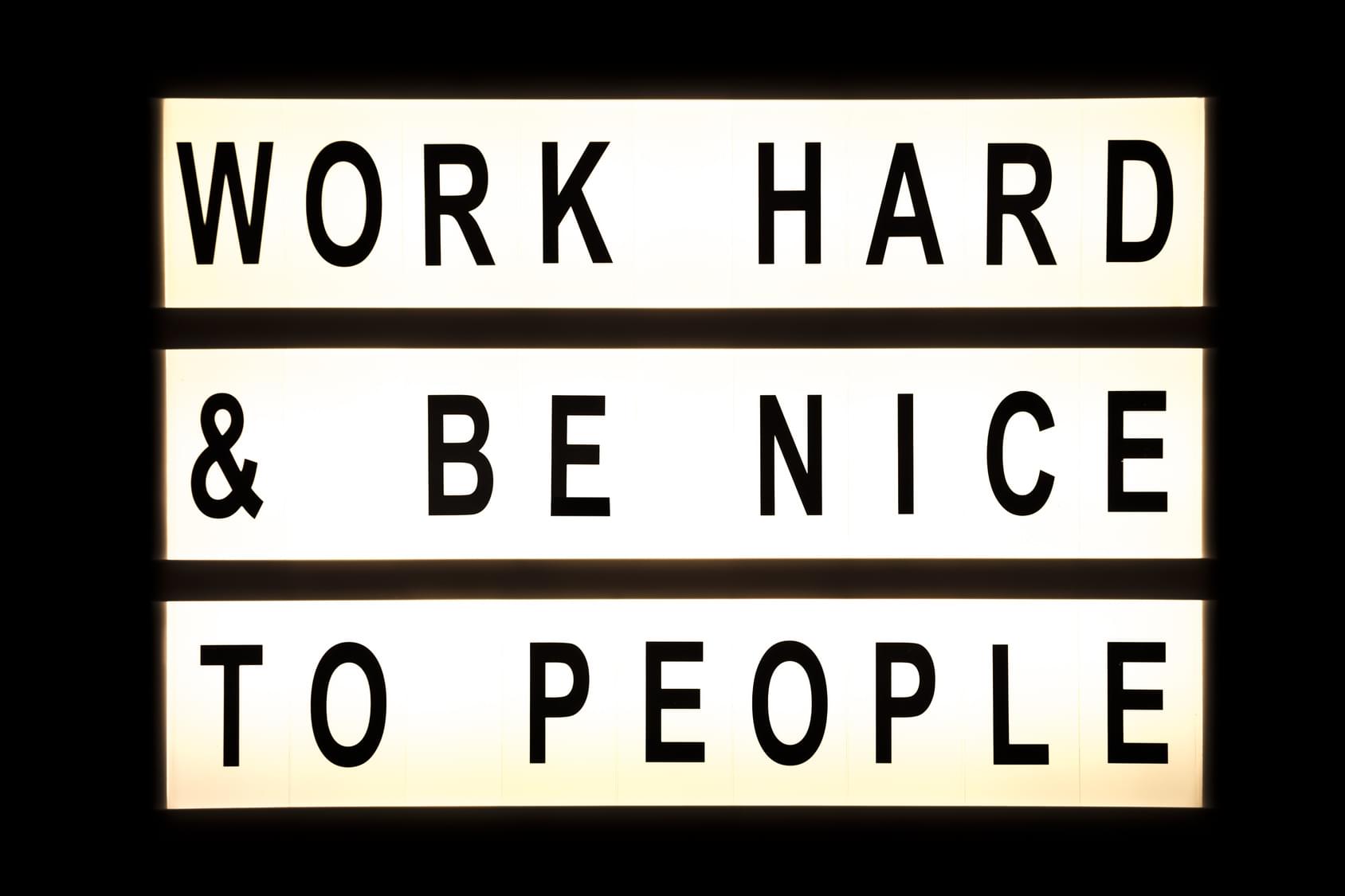- Treat people at all points in the customer lifecycle the same
- Just be nice
- Enforce compassionate behavior across departments and interactions.
Adopt a customer lifecycle mindset
Let’s start before you even have customers. We often reduce leads and prospects to names on a page, numbers in the dashboard, or an anonymous group. But behind each of those email addresses and job titles is a human being — one who will hopefully buy your product today, a week from now, or in three years. You want leads to be customers one day, which means humanizing your interactions from the very beginning. You don’t have to invite each lead to your daughter’s fifth birthday party, but get to know what types of people are looking at your products. Do some persona work — give target customers names, faces, and backstories. The better you know your customer, the better equipped you are to answer their needs. Ok, so everyone on the marketing team knows the personas and has a framed picture of each one on their desk. What about sales? Do they know and love Keith, the accounting manager persona, like marketing does? You don’t want Keith to have a fantastic experience with marketing and then feel abandoned during the sales negotiations, so make sure everyone is on board with personas. Lifecycle marketing balances the sense of urgency with which individuals treat interactions with leads, customers, and advocates. This type of marketing makes everyone important, whether they’re a current, past, or future customer. Keith should have a similar experience and level of service whether he’s tagged as a lead, a customer, or a former customer in the CRM. Yes, even former customers or dead leads should be treated well. If they’re not your ideal customer now, who’s to say they won’t be in the future? Don’t burn Keith’s bridge; you might need it someday. Finally, customers respond to helpful, considerate brands. Sure, snark is funny when Wendy’s burns Burger King on Twitter, but do people buy more office printers or business software because of snark? I guess the restaurant chain Dick’s Last Resort is one glaring exception in the retail space that proves the rule. But Dick’s is selling an escape, if a masochistic one. For everyday brands like Trader Joe’s and Chick-fil-A, being nice works. During the work day, we don’t have time to deal with rudeness or get all worked up when a service contact ignores our calls. The bad feelings we get when treated rudely can quickly spread. Even if bad feelings from rude or inconsiderate interactions don’t result in the dreaded social media takedown, they ultimately harm your brand.What does good customer communication look like, or not?
Good Customer Communication is Compassionate
Compassion is the ability to feel for another human, and it results in the desire to “relieve their suffering.” To show compassion, consider how the customer feels, their current situation, consider their needs in the situation, and how you can help fix the problem. The customer doesn’t really care that your servers are down; they need to access their files. Tailor your conversations and responses to address those needs first, rather than explaining the company’s position first.Good Customer Communication is Consistent
Every interaction with a customer, whether they encounter a human, your website, a chatbot, or the product, should have a consistent level of service, tone, and feeling. In the age of leaked memos and public Twitter blasts, we have to remember that all communication — digital, face-to-face, in writing — is potentially public-facing communication. This includes internal notes on support tickets, talk in the break room, and messaging forums. Write and speak like the customer is watching, because they are. Showing compassion, however, doesn’t mean you have to be a doormat. You don’t have to give in to every impossible request. Consider the customer’s feelings, but stick to your guns. That will help the rest of the team be more consistent with those same customers in the future.Good Customer Communication is Not Condescending
Companies that do customer communication well are helpful and informed, but they don’t condescend to their customers. Of course your company is the expert on your product; you make it! It’s pretty easy to slide from “Sure! Let me help you with that,” to “You just need to pull up the help documents for the best answer.” Remember, a customer has needs, and your job is to meet those needs. Sneering or patronizing language tells the customer that their need isn’t important to you.What many companies often forget is that how they discuss customers around the watercooler or in their messaging apps shapes how they deal with the customers.
Where to Align Customer Communication
ALSO READ: The Three Stages of Sales and Marketing AlignmentThe Customer Handoff
Handoffs from marketing to sales to support and back to marketing are fraught with danger. Customers slip through the cracks, they get confused and don’t know who to talk to, and tone changes are jarring. The problem isn’t that anyone is necessarily giving bad service, but that the service levels aren’t consistent.- What does your handoff process look like?
- Who is in charge of ensuring follow-up after the handoff?
- Does anyone collect customer sentiment data after the handoff?
- How is this data shared across the company?
Written Communication
Your company communicates through emails, text messages, website landing pages, downloadable content, direct mail, and online and print ads. Shouldn’t your tone, level of service, and consideration for the customer’s needs be consistent across all of these mediums? Agree on what your company communication should sound like, and designate a person on the team who can shape or check those documents for all parts of the company. Remember: sales, marketing, support, and even product will have public documents they need to send out sometime.Internal Communication
What many companies often forget is that how they discuss customers around the watercooler or in their messaging apps shapes how they deal with the customers. What we might dismiss as venting can really affect the team’s view of customers. An offhand “I just got an email from the jerks over at ExampleCorp today,” can quickly turn into “Everything ExampleCorp asks for is annoying and dumb.” It’s too easy to tell ourselves that internal company communication on a support ticket won’t affect the customer, but bad mouthing a customer in private usually doesn’t stay private for long.Tools and Tactics for Communication Alignment
Ensuring that your company communicates consistently with customers isn’t difficult, but it will take a bit of initial time investment. Thankfully, there are some tools and tactics you can use to improve the process of understanding your communication and improving it.Compassionate responses
Train all staff to listen first and mirror the problems of the customer. Restating the customer’s needs really shows you’re listening. And stop apologizing; it sounds empty after the second time. Instead, use phrases like:- That sounds frustrating. Let me see how I can help.
- It sounds like you’re having trouble making this widget work. Here’s what I suggest.
- From what you’re saying, it sounds like you’re having difficulties connecting to the service. I’m here to help!
SSOT
What is your company’s single source of truth (SSOT) for customer communication? Do you log all customer interactions in your CRM or a help desk? The best way to check and ensure consistent considerate communication across the company is to have one place where all customer interactions are logged for anyone at the company to see.SLAs
More formally, write service level agreements (SLAs) that guide how your employees hand off customers across teams, the types of service the customer should expect, and even the number of phone calls and emails they can expect per month. SLAs can stand on their own or be included in the contract agreement, but they should represent the baseline level of service the customer can expect. Don’t feel like you have to hold back if you want to go above and beyond.Customer-facing content reviews
Bring your customer communication out into the light! In team and department meetings, workshop through good responses and try to improve some you’ve identified that don’t quite fit your company’s compassionate tone. Crowdsource your answers so the team actively writes in your new and improved voice.Use employee advocates
You know you’ve got buy-in when employees speak up to one another. Who are your employee influencers who know how to tactfully promote compassionate speech? A gentle prompting to remember that your focus is on helping the customer and meeting the customer’s needs might be all it takes. You could even establish a safe word that means “It sounds like we’re not being compassionate. How can we focus instead on the customer’s needs?”The Fortunate Side Effects
A delightful side effect of compassionate customer interactions and focusing on the customer’s needs is you stop wasting time placing blame and trying to explain away problems. The customer usually doesn’t care whether product ran out of money or there was a snowstorm in Michigan (what else is new, right?). The customer cares about getting their needs met, or they’re going somewhere else. Three out of five online customers will take their business elsewhere online after a bad customer service experience. That’s a significant chunk of your revenue. If your company is known for being nice and helping customers, you can reap the benefits of your competitor’s poor communication. Many of today’s customers expect communication with companies to go badly. Get ahead of the curve! Show compassion from the start.***
Getting your teams to align on customer experience is hard enough with a full funnel. Let us help you build your customer base. TechnologyAdvice helps marketers reach their lead goals and communicate better with all stakeholders. Find out how we can help your team connect with more customers today.
